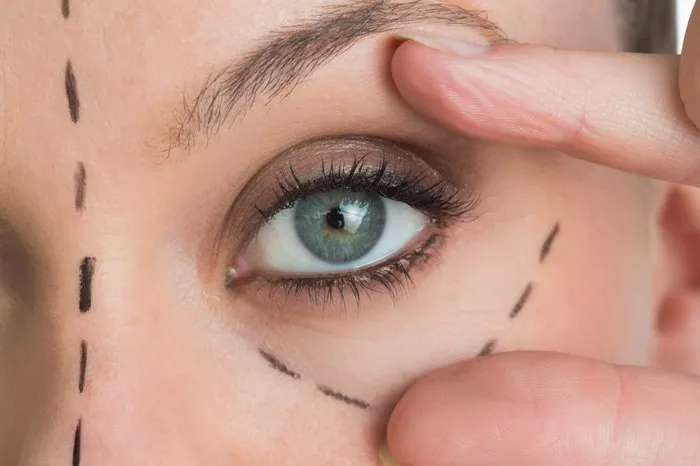Eyelid surgery, also known as blepharoplasty, is a cosmetic procedure that involves the removal of excess skin, fat, and muscle from the eyelids. It can be done on both the upper and lower eyelids and is often performed to rejuvenate the appearance of the eyes or to correct functional issues, such as droopy eyelids that interfere with vision. While eyelid surgery is a relatively minor procedure, patients often wonder how long it takes to recover after eyelid surgery fully. In this article, we’ll explore the various factors that influence recovery time, what patients can expect during the recovery process, and tips for ensuring a smooth and speedy recovery.
Factors that influence recovery time
The recovery time after eyelid surgery can vary from person to person and depends on several factors, including:
- Type of surgery: The type of eyelid surgery you undergo will determine the extent of the procedure and the level of trauma to the eyelid tissues. For example, a lower eyelid blepharoplasty involves making an incision on the lower eyelid and removing excess fat and skin. This procedure typically has a shorter recovery time than an upper eyelid blepharoplasty, which involves removing excess skin and sometimes muscle from the upper eyelid.
- Age: As we age, our skin becomes less elastic, and the healing process can take longer. Older patients may experience a slower recovery time than younger patients.
- Health status: Patients with pre-existing medical conditions, such as diabetes or high blood pressure, may have a slower recovery time than those who are generally healthy.
- Lifestyle factors: Smoking, alcohol consumption, and poor nutrition can all affect the healing process and lengthen recovery time.
What to expect during the recovery process
The recovery process after eyelid surgery typically takes two to four weeks, depending on the extent of the procedure and the patient’s overall health. Here’s a breakdown of what patients can expect during each stage of the recovery process:
-
First 24 to 48 hours
Patients will experience some swelling, bruising, and discomfort in the eyelid area. Ice packs can be used to reduce swelling, and pain medication may be prescribed to manage discomfort.
-
First week
Swelling and bruising will continue to subside during the first week, and patients can expect to feel more comfortable. It’s important to keep the head elevated and avoid activities that could increase blood flow to the eyelids, such as bending over or lifting heavy objects.
-
Second week
By the second week, most of the swelling and bruising should be gone, and patients can resume light activities such as driving and light exercise. Strenuous exercise should still be avoided, as it can increase blood flow to the eyelids and prolong the healing process.
-
Third and fourth weeks
By the third and fourth weeks, most patients should be fully healed and able to resume all normal activities, including exercise.
Tips for a smooth and speedy recovery
While the recovery process after eyelid surgery can be uncomfortable, there are several things patients can do to ensure a smooth and speedy recovery. Here are some tips:
- Follow post-operative instructions: Your surgeon will provide you with detailed post-operative instructions, including how to care for the incisions, when to apply ice packs, and how to manage pain. It’s essential to follow these instructions closely to ensure proper healing.
- Get plenty of rest: Rest is critical to the healing process, so be sure to get plenty of sleep and avoid strenuous activities.
- Stay hydrated: Drinking plenty of water can help flush out toxins and reduce inflammation, which can speed up the healing process.
- Eat a healthy diet: A diet rich in protein, fruits, and vegetables can provide the nutrients your body needs to heal and recover quickly.
- Avoid smoking and alcohol: Smoking and alcohol can both slow down the healing process, so it’s essential to avoid these substances for at least a few weeks before and after surgery.
- Wear sunglasses: Wearing sunglasses can help protect your eyes from bright sunlight, wind, and dust, which can irritate the incisions and prolong the healing process.
- Be patient: It’s normal to experience some discomfort and swelling after eyelid surgery, but remember that these symptoms will subside with time. Be patient and give your body the time it needs to heal.
When to contact your surgeon
It’s important to keep in touch with your surgeon during the recovery process, especially if you experience any unexpected symptoms. Here are some signs that you should contact your surgeon:
- Excessive bleeding or drainage from the incisions
- Increasing pain or discomfort that is not relieved by medication
- Signs of infection, such as fever or redness and warmth around the incisions
- Changes in vision, such as blurred or double vision
- Your surgeon will be able to evaluate your symptoms and recommend the appropriate course of action.
Conclusion
Eyelid surgery is a relatively minor procedure that can produce dramatic results. While the recovery process can be uncomfortable, most patients can expect to fully recover within two to four weeks. By following post-operative instructions, getting plenty of rest and hydration, and avoiding smoking and alcohol, patients can ensure a smooth and speedy recovery. If you have any concerns or unexpected symptoms during the recovery process, don’t hesitate to contact your surgeon for guidance and support.


